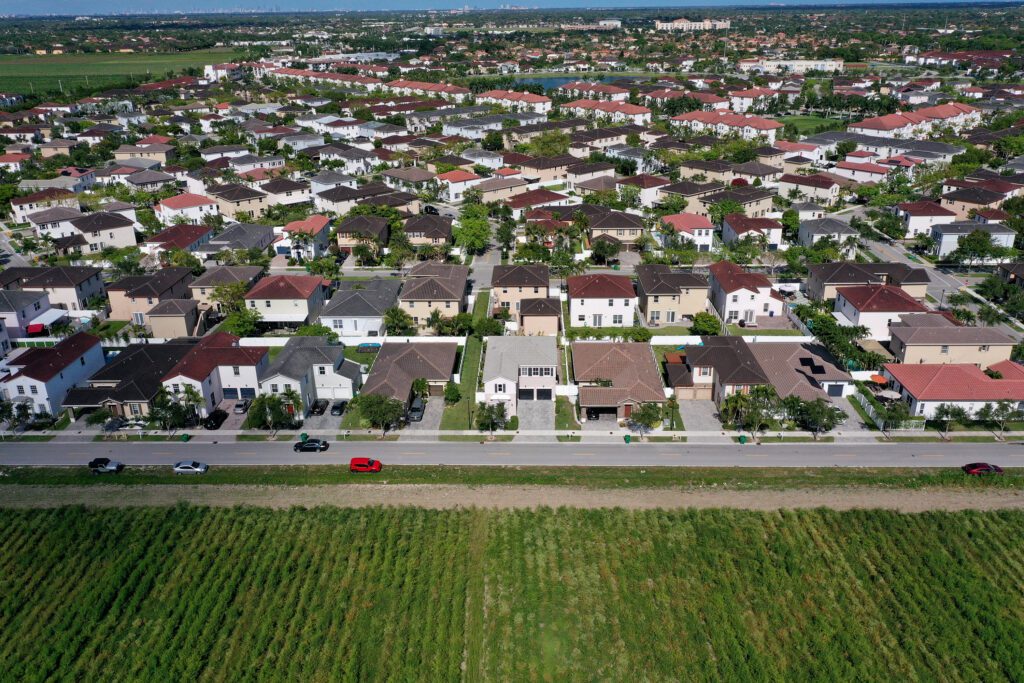Miami-Dade County Housing Market: Inventory Surges Amidst Rising Prices
Overview
The housing landscape in Miami-Dade County has undergone significant changes recently. According to data from Miami Realtors, the inventory of homes for sale soared by 43.3% in April 2023, compared to the same month last year. Despite this surge, home prices continue to climb, reflecting an intricate balance of supply and demand in one of the nation’s most coveted real estate markets.
Key Insights
- Inventory Increase: In April 2023, the total number of active listings jumped from 13,094 to 18,765. This sharp rise surpasses the national average of 20.8% for the same period.
- Price Trends: In April 2020, the median sale price in Miami-Dade was $330,000. By April 2025, it had reached $585,950, illustrating a nearly double increment over five years.
Why This Matters
The COVID-19 pandemic has reshaped housing markets across the U.S., especially in Florida. Low mortgage rates and an increase in remote work catalyzed a home-buying surge, leading many to flock to the Sunshine State.
Historical Prices
- April 2020: $330,000 (up 8.2% from April 2019)
- April 2025: $585,950 (up 5.6% from April 2024)
Shifts in Buyer Dynamics
The escalating inventory, together with stagnating sales, hints that Miami-Dade may be heading towards a market correction, mimicking trends already observed in broader Florida. Notably, the median sale price across Florida saw a 3.2% decrease in April compared to a year earlier.
Important Takeaways
- Single-Family Homes: Inventory increased by 43.04%, moving from 3,864 to 5,527 homes.
- Condominiums: Listings rose by 43.42%, totaling 13,328 units available.
How Do Supply Levels Affect Buyers?
A balanced market typically requires a six to nine-month supply of homes. Currently, Miami’s single-family home market reflects a 6.3-month supply, whereas the condo sector shows a 13.7-month supply, giving buyers more choices and negotiating power.
Sales Activity
Despite rising inventory levels:
- Total Homes Under Contract: 2,133 homes, a 19.1% drop from last year.
- Homes took an average of 81 days on the market, a 15-day increase year-over-year.
Market Influencers
Hannah Jones, a senior economic research analyst at Realtor.com, emphasized the prolonged price elevation due to competition during the pandemic. With high mortgage rates still prevalent, many potential buyers remain hesitant.
Regional Trends
Other counties in South Florida are also witnessing similar inventory hikes:
- Broward County: 46% increase in active listings; 16.4% drop in sales.
- Palm Beach County: 30% increase in listings; 10.7% decline in sales.
Factors Contributing to Inventory Growth
- Increased New Construction: Florida has become the leading state in new home builds.
- Homeowners Listing Properties: Many are opting to sell, leaving behind the market challenges of high mortgage rates.
- Rising Living Costs: Factors including high HOA fees and home insurance premiums are sidelining buyers.
Future Trends and Insights
Hannah Jones notes that the trajectory of home prices in Florida hinges on the broader economic context and mortgage rates. Changes in these areas could lead to improved affordability, should prices and rates decrease.
Miami Realtors Chairman Eddie Blanco highlighted the resilience of Miami’s market amid economic fluctuations, thanks to burgeoning employment and population growth.
Conclusion
While Miami-Dade County continues to be a strong market for real estate, evolving dynamics hint at potential shifts. Inventory levels are rising, but so are challenges for buyers due to sustained price increases. With several influencing factors at play, the coming months will be crucial for both buyers and sellers in this vibrant market.
For more detail on housing trends, visit Redfin, or explore insights from Miami Realtors.


